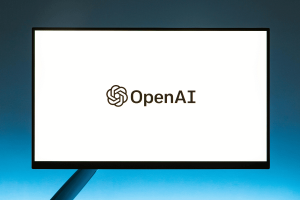Artificial Intelligence (AI) is still in its early developmental stages, but it has already begun to impact our lives in many ways. You may not realize it, but chances are you use some form of AI every day.
In this article, we will be providing a basic overview of AI – what it is, how it works, and some of its applications. We hope that this post has provided you with an insightful glimpse into the fundamentals of AI and its potential effects on our future.
What is Artificial Intelligence?
Artificial intelligence (AI) refers to the ability of a machine or computer system to perform tasks that would normally require human intelligence, such as learning, problem-solving, decision-making, and language understanding.
AI is a branch of computer science that seeks to replicate or simulate the way human brains think and process information. AI strives to create intelligent machines that can reason and make decisions just like humans do. The goal of AI is to develop algorithms that can understand language, recognize images, solve problems, and learn from experiences.
AI systems can be trained to perform these tasks by being fed large amounts of data and using algorithms to identify patterns and make decisions.
Types of Artificial Intelligence
AI can be divided into two main categories: narrow or general.
Narrow Artificial Intelligence
Narrow artificial intelligence, also known as weak AI or narrow AI, is a type of artificial intelligence that is designed to perform a specific task or handle a specific domain of knowledge. It is focused on a single task and is not designed to be general-purpose like strong AI.
An example of narrow AI would be a computer program that is designed to play chess. It has been trained on chess and is able to analyze different chess positions and make decisions based on them, but it is not able to perform any other tasks beyond playing chess.
Another example of narrow AI would be a virtual personal assistant like Apple’s Siri or Amazon’s Alexa. These systems are able to understand and respond to natural language queries and perform tasks like setting reminders or answering questions, but they are not capable of general intelligence or performing tasks outside of their defined capabilities.
Chatbots and text generators, image generators, as well as video generators, are some of the most commonly known narrow AI available in the market today.
Narrow AI is often contrasted with strong artificial intelligence, which is a hypothetical type of AI that is able to perform any intellectual task that a human can. While narrow AI is currently more common and easier to develop, researchers and scientists are working towards developing strong AI.
General Artificial Intelligence
Strong artificial intelligence, also known as artificial general intelligence (AGI), is a hypothetical type of artificial intelligence that is able to perform any intellectual task that a human can. This includes tasks such as problem-solving, decision-making, learning, and adapting to new situations. Strong AI is not limited to a specific domain or task and is able to perform a wide range of tasks and adapt to new environments.
Strong AI would have the ability to understand or learn any intellectual task that a human being can, and be able to apply that learning in a flexible manner to a new task. This is in contrast to narrow artificial intelligence, which is designed to perform a specific task or handle a specific domain of knowledge.
The development of strong AI is a goal of some researchers in the field of artificial intelligence and is the subject of much speculation and debate. Some experts believe that it is possible to create strong AI in the future, while others are more skeptical. There is currently no strong AI system that exists and it is not clear when or if such a system will be developed.
How does Artificial Intelligence Work?
AI uses a range of techniques to process data and make decisions, including machine learning, deep learning, natural language processing (NLP), computer vision, and robotics.
Machine Learning
Machine Learning is the use of algorithms that can learn from data without being explicitly programmed. It’s a type of artificial intelligence that allows machines to learn from experience, recognize patterns, and make decisions.
Deep Learning
Deep Learning is a subset of machine learning that uses neural networks to mimic the way our brains process information. It’s an advanced form of AI that can detect complex patterns in large volumes of data.
Natural Language Processing (NLP)
NLP is a technique used for analyzing natural language, such as text and speech. It enables machines to understand the written and spoken language and process them accordingly.
Computer Vision
Computer Vision is a field of AI that uses computer algorithms to interpret imagery and extract information from visual sources. It’s used for applications such as facial recognition, object detection, optical character recognition (OCR), and autonomous vehicles.
Robotics
Robotics is the use of robots to perform tasks with human-like precision. It combines AI, machine learning, and computer vision to create autonomous systems that can perceive their environment and act accordingly.
Brief History of Artificial Intelligence
The concept of artificial intelligence (AI) has been around for centuries, with roots dating back to ancient Greek mythology. However, it was not until the 20th century that AI began to be developed as a scientific field.
In the 1950s, a group of researchers at Dartmouth College coined the term “artificial intelligence” and held a conference to explore the possibility of creating machines that could think and behave like humans. This conference marked the beginning of the field of AI as we know it today.
During the 1960s and 1970s, AI research focused on creating machine learning algorithms that could enable computers to learn from data. This led to the development of expert systems, which were able to perform specific tasks and make decisions based on a set of rules and data.
In the 1980s and 1990s, AI research expanded to include natural language processing, which allowed computers to understand and generate human-like language. This led to the development of virtual assistants like Apple’s Siri and Amazon’s Alexa.
In recent years, AI has become increasingly prevalent in a variety of industries, including healthcare, finance, and transportation. The development of deep learning algorithms has also led to significant advances in image and speech recognition, as well as self-driving cars.
Applications of Artificial Intelligence in Industries
Artificial intelligence (AI) has the potential to revolutionize a wide range of industries and has already made significant inroads in several areas. Some of the key applications of AI in various industries include:
- Real estate: AI can be used to analyze property data and help real estate agents make informed decisions about buying and selling properties. It can also be used to help automate certain tasks, such as identifying potential buyers or sellers based on their online behavior.
- Arts: AI can be used to generate original works of art, such as music, paintings, and sculptures. It can also be used to analyze and interpret existing works of art, helping to shed new light on their meaning and significance.
- Communication: AI can be used to improve the accuracy and speed of language translation, as well as to analyze and classify text and speech data. It can also be used to optimize the performance of communication networks and systems.
- Agriculture: AI can be used to analyze and interpret data from sensors and other sources to optimize crop growth and yield. It can also be used to identify pests and diseases, and to help farmers make more informed decisions about their operations.
- Manufacturing: AI can be used to optimize production processes and supply chain management, as well as to identify potential problems and recommend solutions. It can also be used to improve the performance of robots and other automated systems on the factory floor.
- Education: AI can be used to personalize learning experiences and to help students learn more effectively. It can also be used to help teachers and educators assess student progress and identify areas where additional support is needed.
- Hospitality: AI can be used to optimize hotel operations, such as by automating tasks such as booking and check-in. It can also be used to analyze customer feedback and identify opportunities for improvement.
- Retail: AI can be used to analyze customer data and help retailers make informed decisions about inventory management, pricing, and marketing strategies. It can also be used to personalize the shopping experience for individual customers.
- Healthcare: AI can be used to analyze medical data and help doctors make more accurate diagnoses and treatment recommendations. It can also be used to optimize the performance of medical devices and assist in surgical procedures.
- Finance: AI can be used to analyze financial data and help investors make informed decisions about their portfolios. It can also be used to detect fraudulent activity and to optimize the performance of financial systems and processes.
- Transportation: AI can be used to optimize routes and schedules for transportation companies, as well as to improve the performance of self-driving vehicles.
- Customer service: AI can be used to help automate certain aspects of customer service, such as answering frequently asked questions or routing inquiries to the appropriate representative. It can also be used to analyze customer feedback and identify opportunities for improvement.
- Logistics: AI can be used to analyze and interpret data to improve route optimization, inventory management, predictive maintenance, automated loading and unloading, and supply chain.
- Science and technology: AI can be used to analyze and interpret scientific data, as well as to optimize the performance of scientific instruments and systems. It can also be used to help researchers make more informed decisions about their work.
Practical Applications of AI in Everday Life
In today’s world, the potential of AI has never been greater. AI is increasingly being used to manage everyday life at home. Here are ten simple examples of how artificial intelligence (AI) is being used in everyday life:
- Cooking: AI can be used to develop smart kitchen appliances, such as ovens and refrigerators, that can suggest recipes based on ingredients on hand and provide cooking instructions.
- Home care: AI can be used to develop smart home systems that can control lighting, temperature, and other home systems based on a user’s preferences and schedule.
- Security: AI can be used to develop security systems that can recognize patterns and alert homeowners to potential threats, such as burglaries or fires.
- Personal assistants: AI-powered virtual assistants, such as Apple’s Siri and Amazon’s Alexa, can help people manage their schedules, set reminders, and answer questions.
- Recommender systems: Many online platforms, such as Netflix and Spotify, use AI to make personalized recommendations for movies, music, and other content based on a user’s history and preferences.
- Image and speech recognition: AI can be used to recognize and classify images and spoken words, which is useful for applications such as facial recognition and voice-to-text transcription.
- Language translation: AI can be used to translate spoken or written words from one language to another, which can be helpful for people who do not speak a common language.
- Personal finance: AI can be used to analyze personal financial data and suggest ways to save money or invest.
- Education: AI can be used to develop personalized learning programs that adapt to the needs and abilities of individual students.
- Health care: AI can be used to analyze medical data and images to assist with diagnosis and treatment planning, as well as to automate tasks such as record keeping and scheduling.
Advantages of Using AI
The adoption of AI has the potential to bring significant benefits to businesses and individuals by improving efficiency, accuracy, and productivity. Below are several advantages of artificial intelligence (AI):
- Improved efficiency: AI algorithms can process and analyze large amounts of data faster and more accurately than humans, which can lead to more efficient decision-making and task completion.
- Increased accuracy: AI systems can be designed to make decisions or take actions based on predefined rules, which can help to reduce the potential for human error.
- Improved decision-making: AI systems can analyze data from a variety of sources to help identify patterns and trends, which can assist with decision-making processes.
- Enhanced capabilities: AI systems can be designed to perform tasks that are difficult or impossible for humans to do, such as analyzing large amounts of data or processing complex algorithms.
- Increased productivity: By automating tasks that are time-consuming or repetitive, AI can help to increase the productivity of individuals and organizations.
- Improved customer service: AI-powered chatbots and virtual assistants can provide quick and accurate responses to customer inquiries, which can improve the customer experience.
- Cost savings: AI can help to reduce labor costs by automating tasks that would otherwise be done by humans, which can result in cost savings for businesses.
Concerns of Using AI
As AI has the potential to transform many aspects of our lives, it has also raised a number of concerns among experts and researchers. Here are several concerns about artificial intelligence:
- Loss of jobs: One concern about AI is that it has the potential to automate many jobs, which could lead to widespread job loss and unemployment.
- Ethical concerns: There are also concerns about the ethical implications of AI, such as the potential for bias in AI systems, as well as the potential for misuse or abuse of AI technologies.
- Privacy concerns: AI systems often rely on large amounts of personal data to function, which raises concerns about the protection of personal privacy.
- Security concerns: AI systems can also be vulnerable to cyber attacks, which could compromise the security of sensitive information.
- Lack of transparency: AI systems can be difficult to understand and interpret, which can make it difficult to determine how they reach certain conclusions or make decisions.
- Social and economic inequality: AI has the potential to exacerbate social and economic inequality if it is not implemented in a way that is fair and equitable.
- Legal and regulatory challenges: There are also legal and regulatory challenges associated with AI, including questions about liability and responsibility when AI systems make mistakes or cause harm.
Future of Artificial Intelligence
It is difficult to predict exactly what the future of artificial intelligence (AI) will look like, as it is an evolving field that is constantly changing and advancing. However, it is likely that AI will continue to become more widespread and integrated into various aspects of our lives. Some potential developments in the future of AI include:
- Increased automation: AI is likely to continue to automate more tasks and processes, which could lead to further job displacement and the need for individuals to acquire new skills.
- Improved machine learning: AI systems will likely become more advanced at learning and adapting to new situations, which could lead to more intelligent and autonomous systems.
- Enhanced natural language processing: AI systems may become more adept at understanding and processing human language, which could improve the effectiveness of virtual assistants and chatbots.
- Greater integration with the Internet of Things (IoT): AI may be more closely integrated with the IoT, allowing for more sophisticated and automated control of connected devices and systems.
- Development of new AI applications: The potential applications of AI are vast and varied, and it is likely that new and innovative uses for AI will continue to be developed in the future.
As AI continues to develop, technology’s advancements and the integration of AI into our lives will play a major role in shaping its future. Thus, it is essential that we pay attention to the potential effects and ethical considerations associated with this rapidly expanding field.
Conclusion
In conclusion, artificial intelligence (AI) is a rapidly growing field that has the potential to transform many aspects of our lives. It can provide businesses with cost savings and improved customer experiences, but it also raises a number of ethical concerns and carries the risk of job loss.
The future of AI remains uncertain, but it is likely that it will continue to become more widespread and integrated into various aspects of our lives. It is important to understand the potential implications of AI, as well as its ethical considerations, in order to ensure that it is developed and implemented responsibly.





